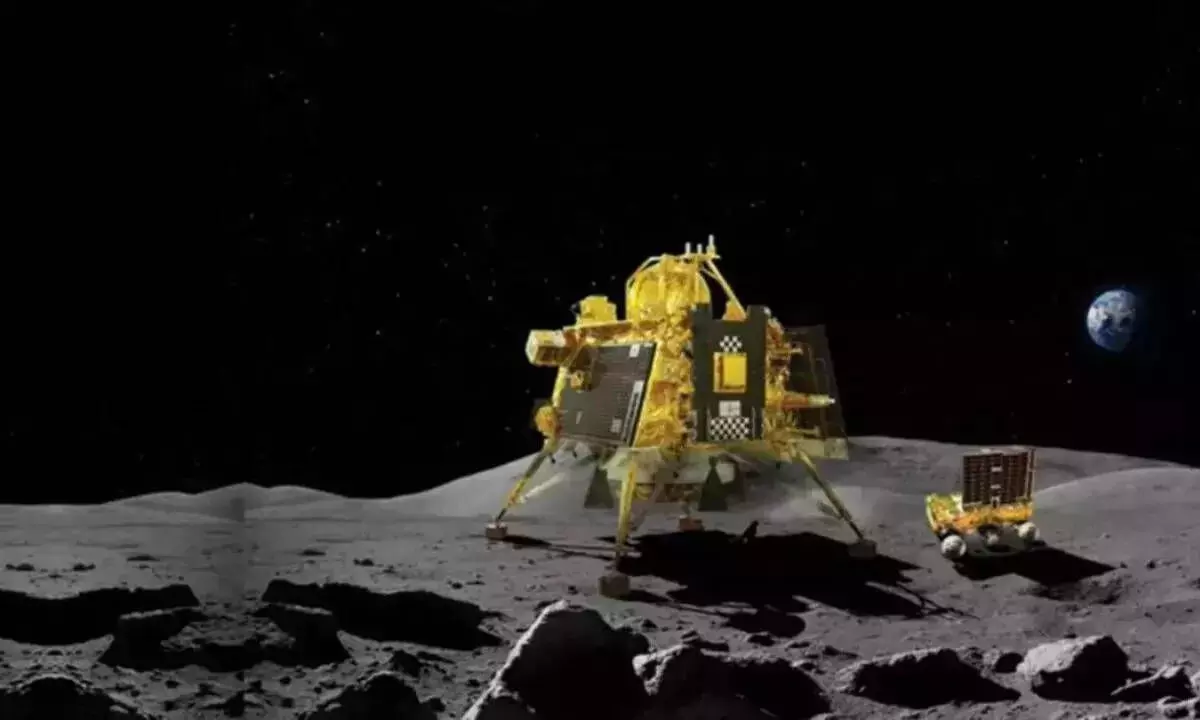Chandrayaan-3 Unveils New Lunar Insights from Shiva Shakti Point

Chandrayaan-3's mission has uncovered remarkable new details about the Moon's surface from the Shiva Shakti Point, contributing to our understanding of lunar geology.
As India gears up to celebrate its inaugural National Space Day on August 23, in honor of Chandrayaan-3’s historic landing on the Moon's south pole last year, significant new findings have emerged from the mission’s data.
Discovery of Uniform Elemental Composition in Lunar Regolith
A research team, led by Santosh Vadawale from the Physical Research Laboratory (PRL) in Ahmedabad, has published groundbreaking insights into the composition of the lunar surface near Chandrayaan-3's landing site. Their study, featured in Nature, is based on data obtained from the Alpha Particle X-Ray Spectrometer (APXS) aboard the Pragyan rover.
The investigation revealed that the lunar regolith surrounding the landing site exhibits a uniform elemental composition. The primary constituent of this regolith is ferroan anorthosite rock, a significant find that sheds light on the Moon's geological history.
Supporting the Lunar Magma Ocean Hypothesis
This discovery aligns with the lunar magma ocean (LMO) hypothesis, which proposes that the Moon's mantle was formed through a process where denser materials sank toward the interior while lighter rocks rose to the surface during the early stages of lunar evolution. The presence of ferroan anorthosite supports this hypothesis, indicating that the crystallization of the LMO played a crucial role in shaping the Moon's crust.
Furthermore, the chemical composition of the regolith near the Moon's South Pole closely resembles soil samples from the Moon's equatorial and mid-latitude regions, reinforcing the LMO theory. The detection of additional magnesium-rich materials suggests a complex mixing process between the Moon's outer crust and deeper layers.
Geological Insights from the Pragyan Rover
The Pragyan rover also contributed valuable geological data, revealing a smooth terrain within a 50-meter radius of the landing site. Beyond this zone, boulders appear to have been ejected from nearby craters, providing further clues about the Moon's geological activity in this region.
India’s Growing Presence in Space Exploration
Chandrayaan-3's success in landing near the Moon's south pole not only marked a historic achievement for India but also positioned the nation as the fourth country to accomplish a soft landing on the Moon, joining the ranks of the United States, China, and the former Soviet Union.
As India prepares to celebrate its first National Space Day, these discoveries underscore the scientific significance of the Chandrayaan-3 mission and highlight India's expanding role in space exploration.



















